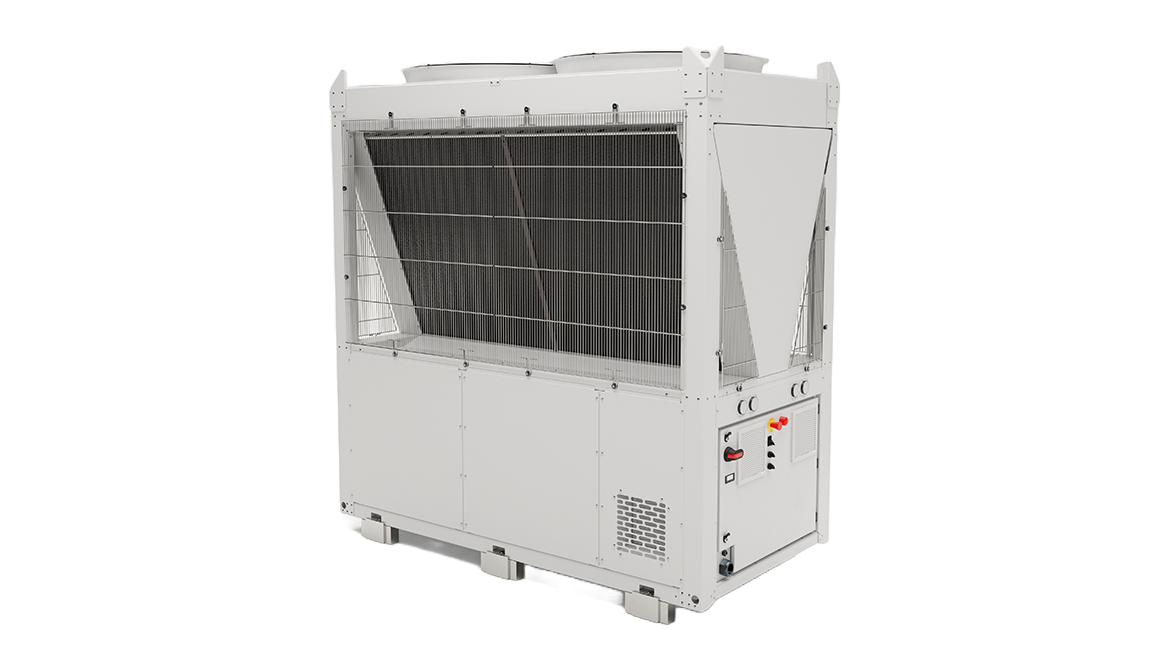
Daikin has announced more details on its new VRV 5 Heat Recovery system, due for launch in July, and the latest evolution of the Variable Refrigerant Volume (VRV) technology first developed by Daikin 40 years ago. Designed specifically to support significant reductions in the carbon footprint of commercial buildings, the climate control solution focusses both on reducing the direct and indirect environmental impact. Still it features unparalleled simplicity and flexibility in design and installation, for which VRV systems are acclaimed.

Reducing direct and indirect emissions
To drive the decarbonisation of buildings forward, new systems should reduce both the direct and indirect CO2eq impact. Daikin has focussed on maximising operational efficiency in real life conditions, minimising the impact. The new solution features a market-leading seasonal efficiency, with a 13% increase in performance compared to the previous generation. Additionally, Daikin’s highly efficient 3-pipe heat recovery system, which allows simultaneous cooling and heating, delivers individual comfort control as well as virtually free heating by transferring heat from areas requiring cooling to those that need heating. Moreover, Daikin’s VRV systems do not need energy consuming pumps, and only have two energy transfer steps (from air to refrigerant and from refrigerant back to air) minimising losses and boosting its overall system efficiency further.
To also greatly reduce the system’s potential direct impact, VRV 5 Heat Recovery has been built specifically for the lower Global Warming Potential (GWP) refrigerant R-32. Not only does R-32 carry heat more effectively than R-410A, allowing a lower refrigerant charge, it also has a lower Global Warming Potential (GWP), together leading to a reduction of the system’s potential direct CO2eq emissions by up to 71%. R-32 is also a single component refrigerant, which supports the circular economy as it is easy to recover and recycle.
This combination of performance developments and technologies means that VRV 5 Heat Recovery is the ideal solution for projects where environmental impact is a priority, including those aiming to achieve BREEAM, LEED or WELL accreditation.

Flexible to suit any commercial building
Daikin VRV 5 Heat Recovery also offers best-in-class design and installation versatility, meaning it is suitable for a wide variety of buildings and installation locations. The system has an extensive temperature operation range of up to +46°C in cooling and down to -20°C in heating. It can also deliver an external static pressure (ESP) of up to 78 Pascals (Pa) so the unit can be installed with ducting to the exterior, in small spaces or behind grilles. It also features five low sound steps down to 40 db(A) in sound pressure allowing installation in accordance with urban planning requirements, while enhancing comfort levels.
VRV 5 Heat Recovery offers the same long piping runs as the current VRV range and even smaller pipe diameters, further reducing the required installation space. It offers the widest outdoor unit range on the market, with heating capacities up to 90kW. And with the inclusion of Daikin’s Shîrudo Technology means it can be used for small rooms and spaces.
Moreover, installation of VRV 5 Heat Recovery is fast. Thanks to the flow through connection of the BSSV boxes, the number of brazing points are reduced as well as the quantity of refrigerant branch kits required.
Peace-of-mind
Shîrudo Technology provides the versatility to accurately control the indoor climate of any room or surface without any additional considerations, field supplied equipment or time-consuming studies. With the factory-integrated refrigerant response measures and easy validation via the Xpress software, Daikin guarantees compliance with the specific IEC product standard, out-of-the-box. How does Shîrudo Technology work? In the unlikely event of a refrigerant leak, it is immediately detected and the affected part of the installation is isolated. This minimises the refrigerant that can leak and means only the units in the affected part of the system will be shut down, while the rest remains in operation.

Smart indoor units and controls for an all-in-one solution
VRV 5 Heat Recovery is compatible with a contemporary range of specially designed R-32 optimised indoor units, offering maximum flexibility for all room configurations. Ventilation units can also be integrated with the system to further improve Indoor Air Quality (IAQ) and create a healthier indoor environment.

To make operation as simple as possible, user-friendly and intuitive controllers ensure the system runs in the most comfortable and efficient way. Daikin’s mini BMS, the intelligent Touch Manager, easily integrates climate control and third party equipment into one system. Providing both local and cloud-based access, building managers can control the building systems from any location via the touchscreen, Intranet or Internet.
The added value for consultants and installers of VRV 5 Heat Recovery comes from the support Daikin provides. A wide range of tools such as BIM objects and floorplan-based software tools make system design and selection simple, with full project and technical support provided by its expert teams.
George Dimou, VRV systems product manager at Daikin said: “There has never been a greater focus on supporting the decarbonisation of buildings and the HVAC-R market has an important role to play. It is up to all of us to apply available solutions, such as the VRV 5 Heat Recovery, and our expert teams are ready to support you to take action now.”
The Daikin VRV 5 Heat Recovery units will be available from July 2022. For more information about the Daikin VRV 5 Heat Recovery solution visit www.daikin.eu/VRV5HR


